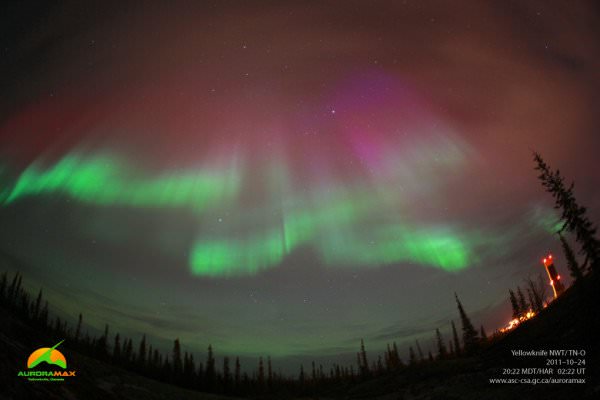Located 880 light-years away, a massive gas giant called CoRoT-2b orbits its star at a mere 2 million miles – less than a tenth the distance of Mercury’s orbit from the Sun. At this cozy proximity the star, CoRoT-2a, continually assaults the hot, gassy exoplanet with high-powered stellar winds and magnetic storms, stripping it of millions of kilograms of mass every day… and undoubtedly creating global auroras that rival even the most energetic seen on Earth.
But CoRoT-2b isn’t merely a tragic player in this stormy stellar performance; the planet itself may also be part of the cause.
[/caption]
Almost 3 1/2 times the mass of Jupiter, CoRoT-2b (so named because it was discovered by the French Space Agency’s Convection, Rotation and planetary Transits space telescope, or CoRoT) orbits its star very rapidly, completing an orbit every 1.7 days. This in turn actually speeds up the rotation of the star itself thus generating even more magnetic activity, via a dynamo effect.
Caught up in this deadly dance, CoRoT-2b is losing mass at an estimated rate of 150 million billion kilograms of material every year! The planet would likely have a long comet-like tail of this stripped material trailing behind it.
Although this sounds like a lot, CoRoT-2b has enough mass to keep “spinning up” its star for thousands of billions of years.
Read more about CoRoT-2a and b here.
Video: Science@NASA

